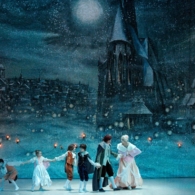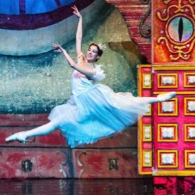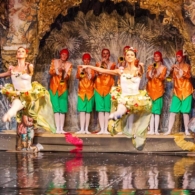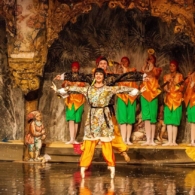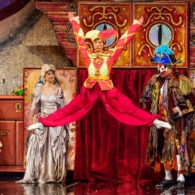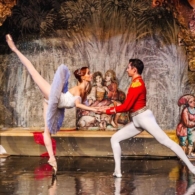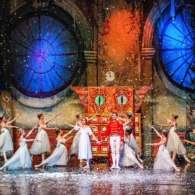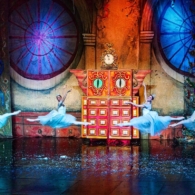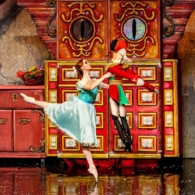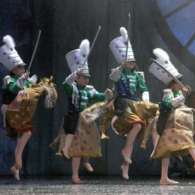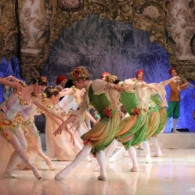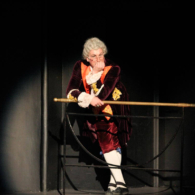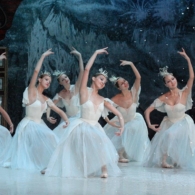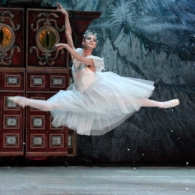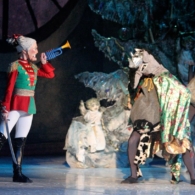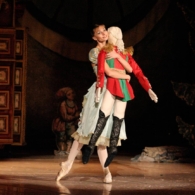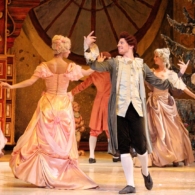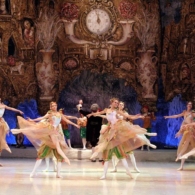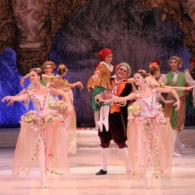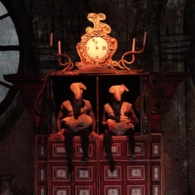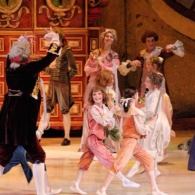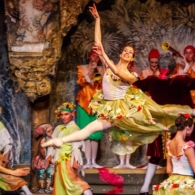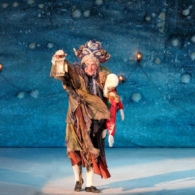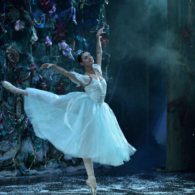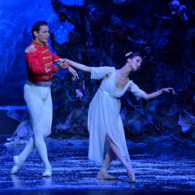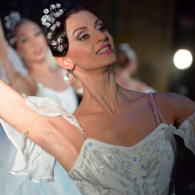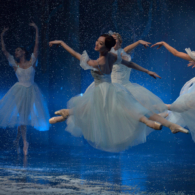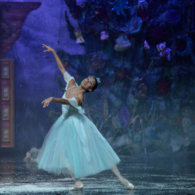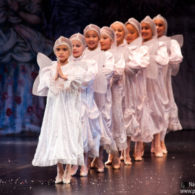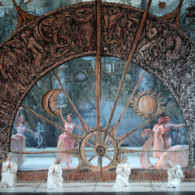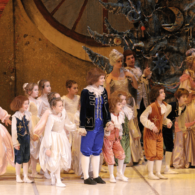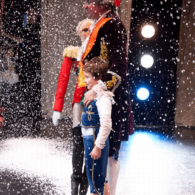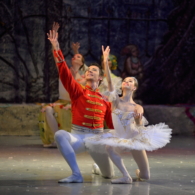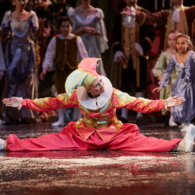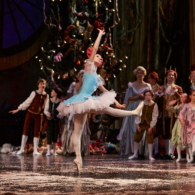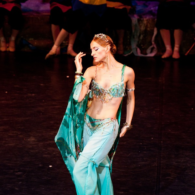Щелкунчик
05/11/2016
Australia / Toowoomba / Empire Theatre
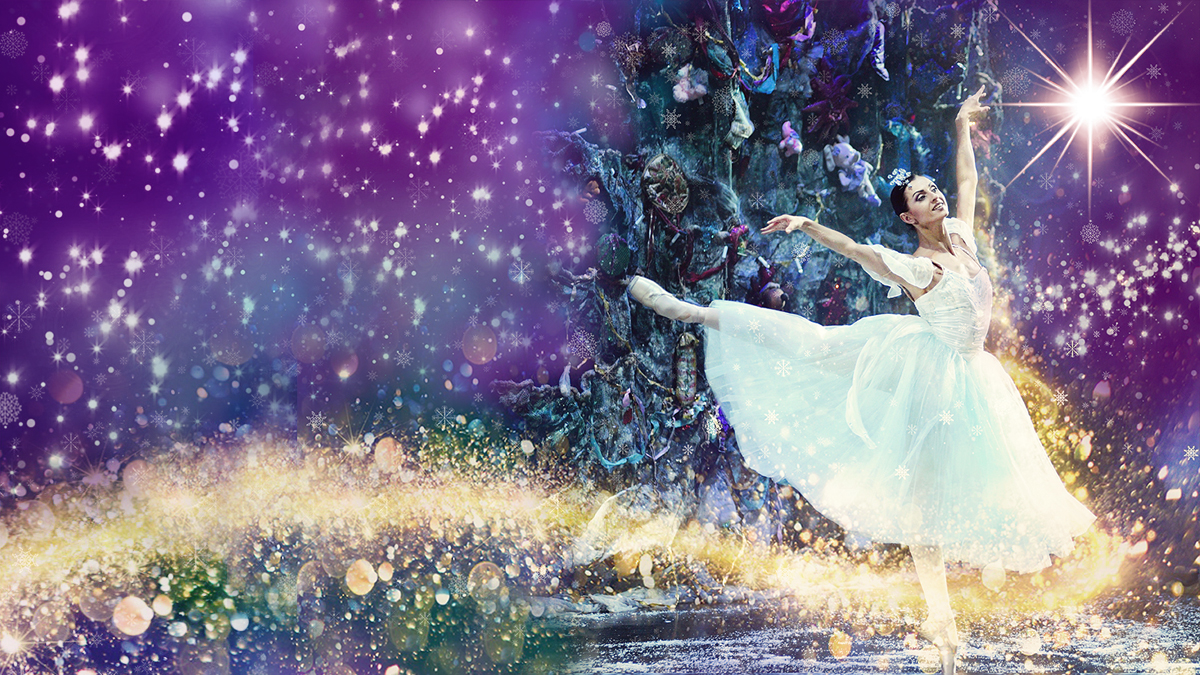
Ballet in Two Acts
Music – P.I.Tchaikovsky (1840-1893)
Libretto by Marius Petipa
Choreography by Vasily Vainonen
Score: Gediminas Taranda
Scenography by Andrey Zlobin
Costume designer – Anna Ipatieva
The libretto for the ballet created by Marius Petipa is based on the fairytale by E.T.A.Hoffmann “The Nutcracker and the Mouse King” in 1816. At the heart of the libretto is the adaptation of the tale, made in 1844 by Alexander Dumas pere. The premiere of the ballet took place on December 6, 1892 at the Mariinsky Theatre in St. Petersburg.
Pyotr Ilyich Tchaikovsky’s music is known and loved all over the world.
When listening to the composer’s works, each person finds in them something of their own, something close and intimate. In this amazing gift consisting in being able to express in music the feelings and thoughts that are available and understandable to millions of people, lies a colossal force of Tchaikovsky’s works.
Among the musicians, Tchaikovsky’s biography is a rather rare phenomenon: the composer begins writing music when he is 22-year old. After graduating from the School of Law in St. Petersburg and receiving a rank of titular counselor, he began service in the Ministry of Justice. But it was life itself that helped him change his destiny and embody the dream of his childhood. A conservatory opened in St. Petersburg in 1862, it was the first professional music training institution in Russia. This fact defined the composer’s lifeway.
Studying at the Conservatory was similar to a devotion – it took three years to get a diploma, a silver medal and a title of free artist.
In combination of genius and a high capacity for work should hide the cause of the startling rapidity with which Tchaikovsky’s works appeared.
Tchaikovsky’s operatic, symphonic, instrumental, vocal and ballet music deservedly received worldwide fame.
Hoffmann’s tale “The Nutcracker” become the basis for Tchaikovsky’s last ballet. In 1891, at a mature age, shortly before his death, Tchaikovsky embodied a new topic in his work, which was the discovery of the world on the threshold of the adolescence. Conceived as a ballet-extravaganza for children, “The Nutcracker” came to be a lyrical and philosophical poem and a significant work that opened new avenues in the ballet theater of late 19th and early 20th century.
… What amazing things do not happen on New Year and Christmas! Favorite toys may suddenly come to life: toy soldiers, dolls, bears… a Christmas tree – fluffy, decorated with sweets and multicolored tinsel – suddenly begins to grow, and now you are feeling like a little snowflake, lost in its branches. Or maybe you have become a mysterious magician, or a Prince?
Listen to the most magical fairytales of the wonderful dreams of the Christmas night. It was created for you by the great Russian composer, Pyotr Ilyich Tchaikovsky, the author of two more ballets, a large number of operas, symphonies, performances.
Today you will see the ballet called “The Nutcracker”.
Act 1
The action takes place in an old German town at the beginning of the XIX century. It is evening. On Christmas Eve the streets are lively, festive. Among those invited to the Christmas tree feast to the Stahlbaum’s there is an old codger, an inventor and master of toys, children’s friend. His name is Drosselmeyer. The Stahlbaum’s parlor is festively decorated. The guests are gathering. Drosselmeyer enters. He brings gifts in his hands. Everything is ready for the beginning of the party. Children run into the parlor. The game of blind man’s buff begins. Drosselmeyer participates too. He is blindfolded. First comes into his hands a little careless Stahlbaum’s daughter Masha.
After the games, dancing begins. Magician Drosselmeyer in the suit of a magician then shows his tricks and a puppet show: “The Mouse King want to kidnap the Princess, but the brave Nutcracker kills the Mouse King and rescues the Princess”. Drosselmeyer is ever-inventive. He shows the children a clockwork clown, a doll. But it is the Nutcracker whom Masha likes most of all.
Frantz tears the Nutcracker from Masha and accidentally breaks him. Drosselmeyer quickly mends the Nutcracker. Masha caresses and soothes the hurt pet. It is late, the clock strikes ten hours, it is time that the young guests left. The ball is over, the lights of the Christmas tree are fading…
It is night. The room, where the Christmas tree is, is illuminated by moonlight. The room seems mysterious, full of magical secrets. Overcoming her fear, Masha comes here to visit the “sick” Nutcracker. She hugs him and falls asleep. Masha has a dream: mice occupy the parlor, led by the Mouse King. Only the Nutcracker’s resourcefulness and courage rescues all. He arranges the soldiers in order and boldly leads them into battle with the mouse army. But the forces are unequal, the mice win. The Nutcracker remains alone with the Mouse King and the Mouse King’s retinue. Overcoming his fear, Masha throws Christmas toys at the Mouse King and this saves the Nutcracker. A brave soldier strikes to death the huge Mouse King with his spade. The mice flee from the battlefield. Drosselmeyer turns the Nutcracker into a handsome Prince. The walls of the house push, light snowflakes swirl in the magical dance. The Nutcracker-Prince call Masha to accompany him to the fairy-tale palace. They get into a magic boat and rush to their dream.
Act II
Masha and the Nutcracker-Prince float around the magic kingdom in their magic boat. They are met by angels and friends-dolls. The orchestra of good gnomes plays music. Masha and the Prince are happy – they have reached their dream kingdom! Drosselmeyer appears, he has in his hand a doll, it is the Nutcracker.
Was it just a night dream? It is enough to wave the magic wand and the dream becomes a reality.
*

